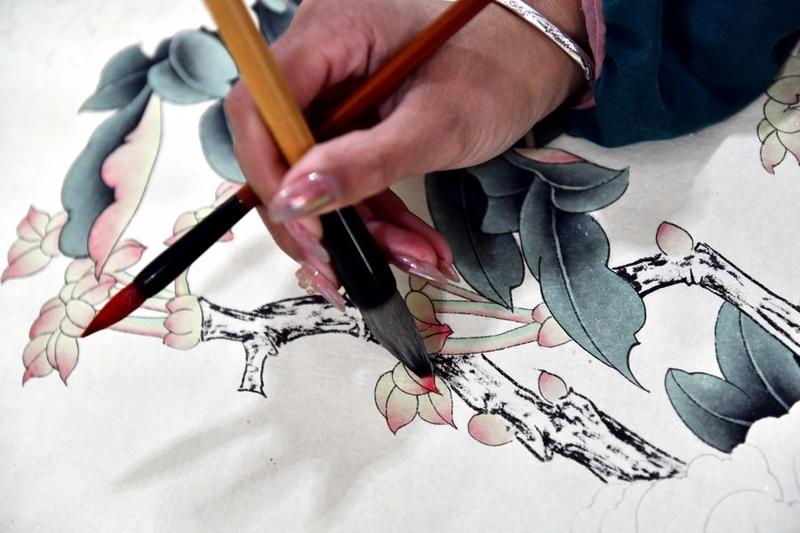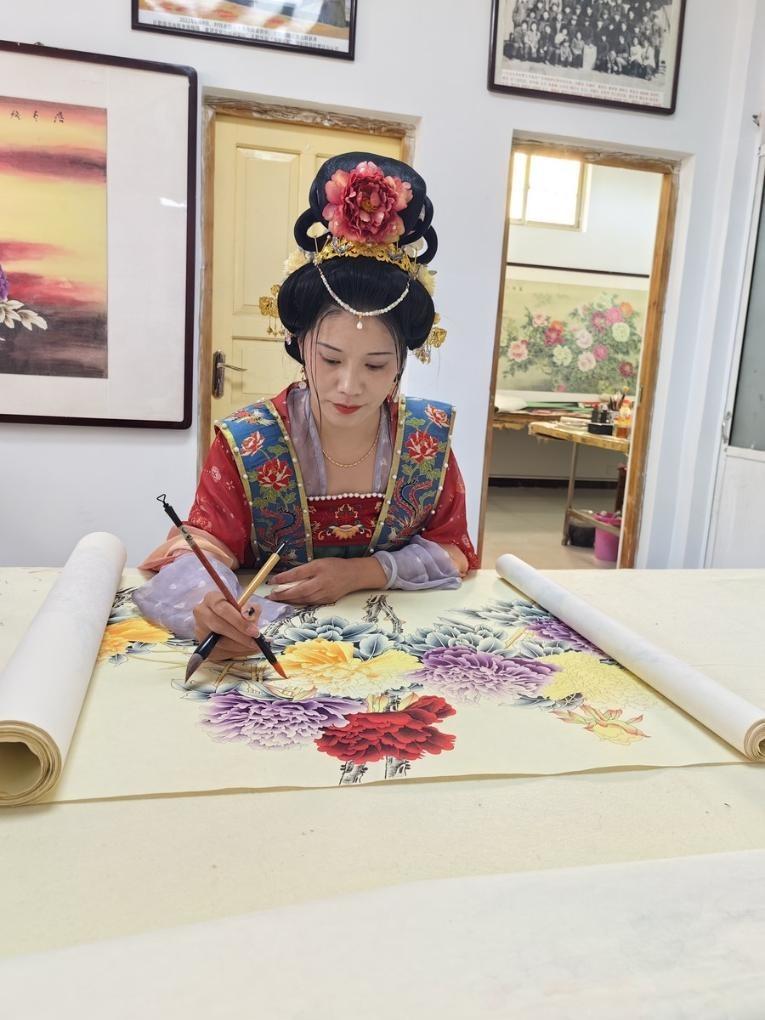 A worker draws a peony-themed realistic painting at a painting professional cooperative in Qilin Township, Juye County, Heze City of east China's Shandong Province on March 20, 2021. (PHOTO / XINHUA)
A worker draws a peony-themed realistic painting at a painting professional cooperative in Qilin Township, Juye County, Heze City of east China's Shandong Province on March 20, 2021. (PHOTO / XINHUA)
JINAN — Many people's mental image of Chinese farmers consists of rural workers wielding hoes and sickles. However, in Juye county, Shandong province, the farmers have replaced these typical tools with inks and brushes.
Juye is located in Heze, a city known for the cultivation of peonies. But it is not only the flowers that have provided a source of revenue, peony-themed art has also become a hit with tourists in recent years. Indeed, the most famous artists are local farmers.
There are 49 painting workshops and 11,000 farmer-painters in the county. Last year, they created more than 1.2 million fine brushwork paintings during the fallow season. These were exported to 40 countries and regions, such as the United States, France and Singapore, with an output value of nearly 2 billion yuan ($280 million).
Yao Guiyuan, 75, from Hongmiao village, was a pioneer in the field of the local painting business. Gifted with the brush, Yao left home in his youth to make a living by painting furniture in Northeast China's Heilongjiang province.
In Chinese culture, the peony is a symbol of wealth, prosperity and beauty. Yao's paintings, which featured red peonies with large petals, won popular appeal and helped boost his income.
 A worker paints at a workshop in Juye County, Heze City of east China's Shandong Province, July 24, 2023. (PHOTO / XINHUA)
A worker paints at a workshop in Juye County, Heze City of east China's Shandong Province, July 24, 2023. (PHOTO / XINHUA)
In the 1970s, Yao worked as a professional painter at an arts and craft factory in Juye, but he lost his job when the factory closed in the early 1980s. In 2009, he returned to the countryside and opened a painting cooperative, where he taught locals how to draw and looked for markets for their artworks.
Over half of the 80 households in Yao's village have joined the industry. Most of their artworks sell for more than 100 yuan, but others have fetched tens of thousands of yuan.
Gui Huaifang was one of Yao's early students. She worked hard and quickly mastered the drawing techniques. It now takes her, on average, about half a month to complete a painting, and her works can fetch 4,000 yuan apiece.
Now the craft has become a ready source of income for local farmers. The annual income of a painter like Gui can reach between 60,000 and 100,000 yuan.
Yao's followers have brought their peony art to a broader stage. Many artworks have been displayed at national events, provincial exhibitions and foreign art museums. In August 2022, a painting by Yao's son, Yao Shuzhao, was displayed on the big screen in New York City's Times Square for four consecutive days.
The painting industry has not only improved the incomes of locals, but has also become a respected pastime within the community. Rather than leaving their rural homes in search of work in the big cities, the women can stay home and spend more time caring for their children and elderly relatives. Thanks to peony art, they are harvesting new opportunities and building better lives at home.



